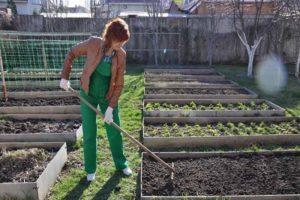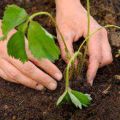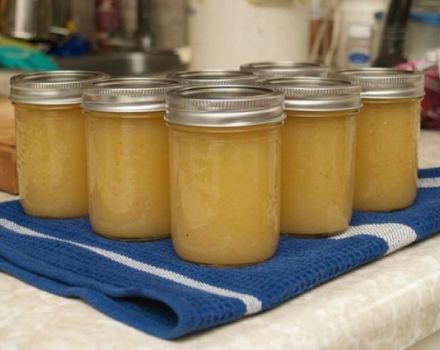Description and characteristics of the Arosa strawberry variety, cultivation technology
The leading position in the popularity rating among mid-late strawberry varieties is occupied by the Arosa variety. Due to large fruits, high fruiting rates, good taste characteristics, it is often found in garden plots, since it is recognized by gardeners who know that to obtain a generous harvest, it is necessary to correctly plant and take proper care of the crop.
Description and characteristics of the Arosa strawberry variety
Italian breeders, crossing the Marmalade and Chandler varieties, received a high-yielding variety, which gives berries that have excellent taste and marketability.
Arosa strawberry is a medium-sized bush, which is adorned with spreading leaves, painted in light green, slightly wrinkled. The flower stalks are placed above the foliage. Flowers differ in size, the calyx is the same, with a corolla. Fruits with an orange-red color and a rounded-conical shape attract attention. The weight of one berry is up to 40 g. Medium-density pulp with a glossy, shiny skin has a taste characterized by juiciness, sweetness and rich aroma.
Medium late ripening variety, fruiting in June.
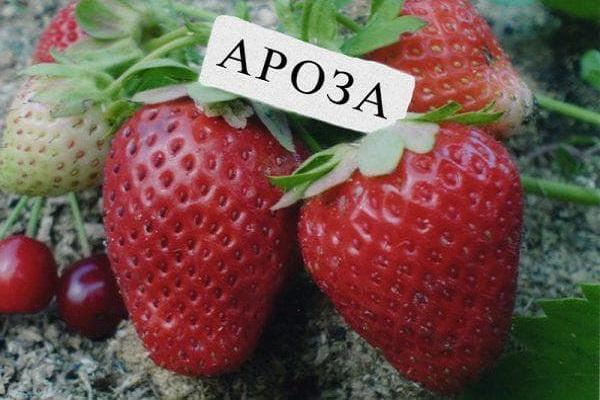
Main pros and cons
The Arosa strawberry variety has a lot of positive qualities, including:
- high yield, 220 centners can be obtained from one hectare;
- the fruits are attractive in appearance and excellent taste;
- the harvest is perfectly transported due to the high strength of the berries;
- the possibility of growing in open, protected soil, pots;
- resistance to major diseases and dangerous pests;
- the ability to withstand a complex of environmental influences in winter, therefore, does not require shelter in southern latitudes.
The description of the variety also provides for the designation of deficiencies, which include:
- moisture deficiency can lead to a deterioration in the taste of berries;
- uneven ripening of fruits.
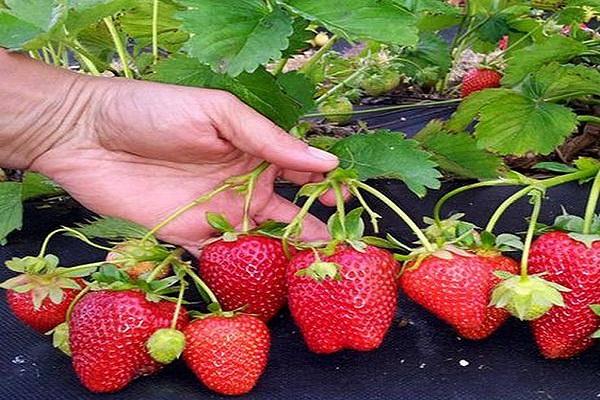
Features of growing garden strawberries
To obtain a rich harvest of fragrant Arosa strawberries, a number of recommendations must be observed when growing a crop, which include the correct timing and planting schemes, as well as the choice of high-quality seedlings and suitable soil.
Boarding time
When determining the time of planting Arosa strawberries, be guided by the peculiarities of the climate of the region. It can be planted both in spring and autumn.
Landing on a cloudy day. To do this, check the weather forecast and choose the optimal time for this.

How to choose seedlings
The future harvest depends on the quality of the planting material. Ready-to-plant strawberry seedlings should have at least 5 leaves, without spots, holes and not eaten by insects, as well as powerful roots with a length not exceeding 10-12 cm.In the presence of various mechanical defects, as well as signs of diseases on the seedlings, such copies.
After purchasing seedlings, you should immediately root them. To do this, send it to a cool place for a day for hardening and adaptation to external conditions. Before planting, dip the roots of the seedlings in the clay mixture.
Site selection and soil preparation
Abundant fruiting will depend on proper location. For Arosa strawberries, a sunlit area is suitable, far from shady trees, bushes. Also, this southern variety of berry culture is afraid of drafts, so it is important to protect the planting site from the wind.
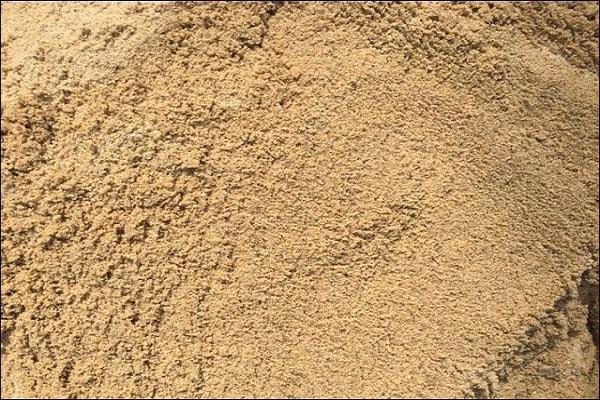
The likelihood of harvesting is reduced if the site is located in a lowland. Groundwater should not be placed close to the planted strawberries, otherwise there is a risk that the seedlings will die.
For planting Arosa strawberries, it is better to choose loam or sandy loam soil. The acidity of the soil should be neutral, varying in the range from 5 to 6.5 pH. If this indicator is high, it is required to preliminarily lime the strawberry beds.
Gardeners recommend planting Arosa after legumes, garlic, carrots, and onions. Tomatoes, potatoes, eggplants are considered bad predecessors.
Dig up the soil with special care before planting and remove all weeds. Then 1 m2 add humus in an amount of 6 kg, nitrogen substances - 50 g, superphosphate - 10 g and potassium salt - 50 g. The soil should be enriched with these nutrients a month before planting Arosa strawberries in order to avoid burning the roots of the seedlings.
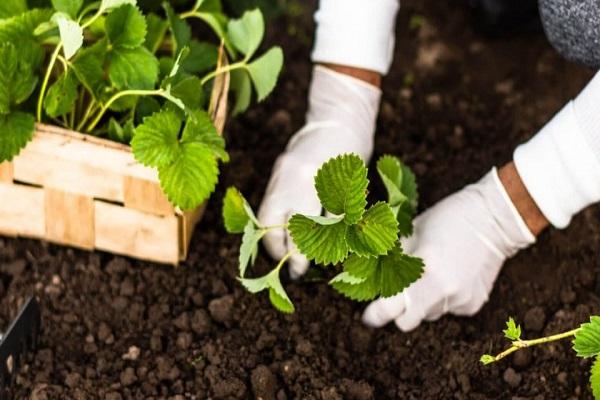
Landing scheme
The compactness of Arosa strawberry bushes allows them to be planted in one or two lines, while observing the distance between planting units 35 cm, and between rows - 30-40 cm.
In the process of planting, straighten the roots over moist soil. After the strawberries are planted, water and mulch well.
The basics of culture care
Caring for strawberries of the Arosa variety provides for the implementation of measures aimed at ensuring the survival of seedlings after planting and creating comfortable conditions for growth.

Spring care
In order for the Arosa strawberry to fully develop and bear fruit, you should surround it with care and attention in the spring:
- after the snow melts, free the beds from dry foliage, which immediately burn;
- prevent the soil from drying out, which will ensure the intensive growth of young leaves;
- loosen the soil between the rows;
- regularly free from weeds, so that the growth of the bush does not slow down and the quality of the fruits does not suffer;
- process strawberry bushes using time-tested drugs for diseases and pests;
- feed with fertilizers containing nitrogen.
In order to avoid problems with yields, you should not neglect the care of Arosa strawberries in the spring.
Watering and mulching
Watering Arosa strawberries is necessary if necessary, strong moisture adversely affects the roots of the plant. Water for irrigation must be at least 15 degrees, otherwise the risk of disease in bushes or rotting of their root system increases. After irrigation, it is recommended to loosen the soil.
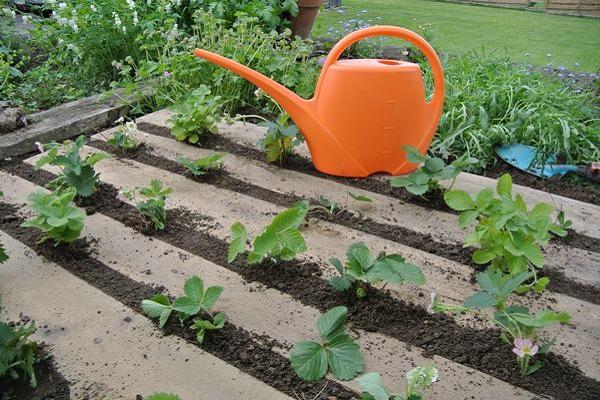
Arosa strawberries are drought-resistant varieties, but this only applies to foliage.As for the berries, the lack of moisture will deprive them of their taste, juiciness and negatively affect their appearance. You should not be zealous with watering, since the culture cannot stand waterlogged soil.
The optimal irrigation method is drip irrigation, it is especially relevant when cultivating strawberries on large plantations. If the plantings occupy a small area of land, then watering is carried out manually. It is important to take into account that when using a hose, you need to ensure that the jet is not strong in order to avoid washing out the roots and exposing them.
To preserve moisture, the root zone should be mulched using straw, rotted sawdust, peat. This technique prevents overheating of the soil and the development of weeds.
Fertilization
When growing strawberries of the Arosa variety, it is recommended to use the standard feeding scheme. In spring, apply nitrogen fertilizers, in summer and autumn, saturate the soil with potash and phosphorus substances. During the growing season, you need to carry out 3-4 procedures.
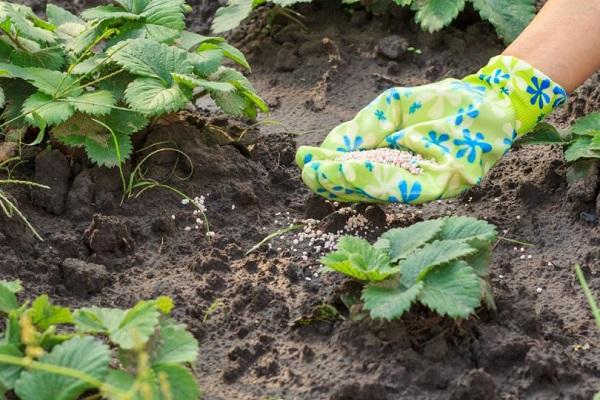
Pruning
Arosa strawberry annually forms many mustaches, which must be trimmed without fail, it is better to do this in the fall, while removing old foliage. It is recommended to leave no more than 2 strong uterine shoots on each plant.
Transfer
A feature of the development of Arosa strawberries is considered to be a gradual increase in diameter of the bush due to the growth of new rosettes, which in the future will negatively affect its fruiting. Therefore, the plants require transplanting to a new location. This event can be held in the spring before flowering and in the first month of the fall.
Arosa strawberries in one place are able to regularly bear fruit for no more than 3-4 years.

Preparing for the winter period
In order for strawberries of the Arosa variety to please with a rich harvest for next year, you need to properly prepare them for winter. To do this, in the fall, prune the bushes, removing unnecessary mustache, old leaves. If the roots are bare, sprinkle them with soil, which will protect them from freezing.
Arosa strawberry is a winter-hardy variety, therefore, in the southern regions it can do without shelter. In the northern regions, it is necessary to cover the strawberry bushes with a layer of sawdust mulch. Also, to protect plants from frost, you can use a material such as agrofiber. The best solution would be to cover the strawberries with spruce branches, which will not only serve as a good insulation, but also hold the snow securely with its needles, and a strong wind will not be able to blow it away.
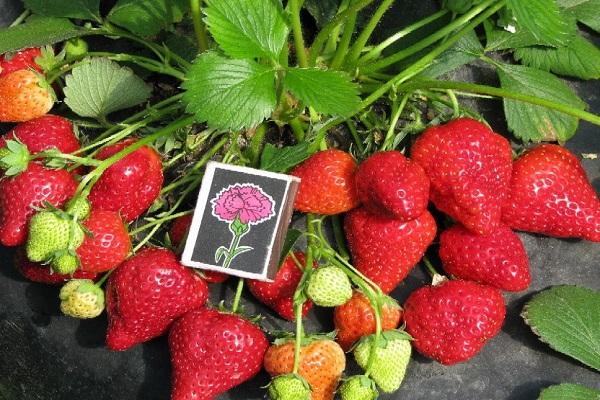
Ways to protect against disease
Arosa strawberries are not immune to disease. The culture is prone to fungal infections. This situation is especially worse during the rainy season, with a decrease in temperature indicators. Dangerous ailments of this berry culture are powdery mildew, white and brown leaf spots, gray rot.
For prevention, it is important to create and maintain an optimal microclimate and a minimal infectious environment. This requires:
- stick to moderate planting density of strawberry bushes;
- watering regularly;
- protect from weeds that are carriers of diseases;
- in spring, remove dry, affected overwintered leaves.
Treat bushes with chemicals when signs of disease are detected. Choose a drug based on the type of pathogen and the phases of plant development.
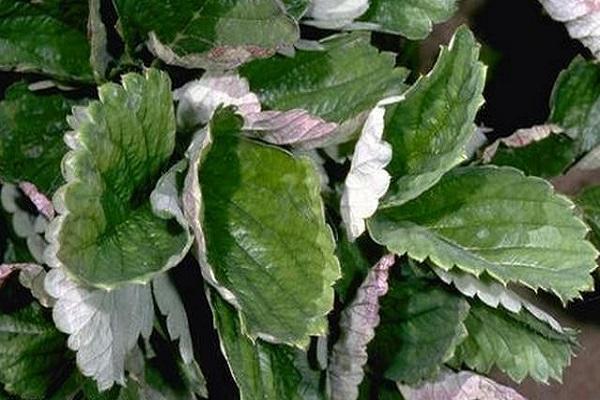
Pest control methods
Pests such as strawberry mites, weevils, spider mites, and nematodes also pose a threat to the harvest. They are capable of ruthlessly destroying plants, feeding on roots, foliage, and some of them prefer to feast on fruits.
Ways to fight:
- in the spring, remove the top layer of soil between the bushes, as insects accumulate there;
- loosen the soil and remove young growth of weeds;
- if found, treat the bushes with such folk remedies as a solution based on laundry soap, tincture of garlic with onions;
- in case of a massive invasion of parasites, use insecticides, as well as soil sanitation with slaked lime.
Repeated spraying, inspection of plants will definitely lead to victory.
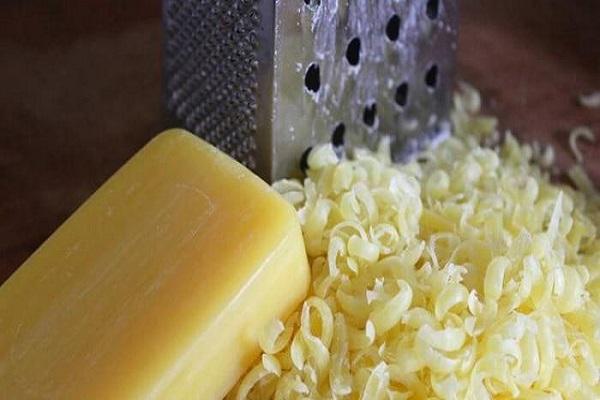
Reproduction methods
The plant propagates by seeds, mustaches, dividing the bush. Each method has its own characteristics, pros and cons.
Mustache
Arosa strawberries form few whiskers, but the rosettes on them differ in power and vitality. For cultivation, it is better to choose healthy mother bushes and cut flower stalks from them. The mustache will root itself. When the rosettes form roots, they need to be cut off from the mother plant and planted on a new bed.
By dividing the bush
This method of reproduction involves dividing strawberry bushes no earlier than 2-4 years old, when there is a strong branching of the shoots. In this case, you need to choose plants with a healthy and well-developed root system.
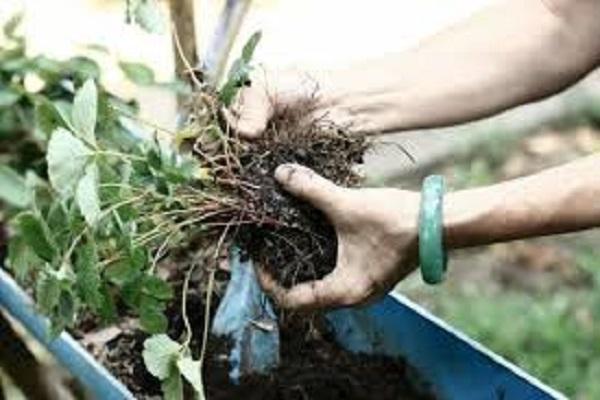
Seeds
This method is considered very difficult and painstaking. To get seeds, you need to collect ripe berries and cut off the outer layer from them, then dry and separate the seeds. Seed material is stored for 4 years.
To grow seedlings, place the seeds in containers in March, evenly spreading them over the soil surface, and lightly sprinkle with soil. Then put in a bright warm place. Moisten the soil from time to time. A month later, seedlings appear. When 2-3 leaves are formed on the plants, make a pick, placing them in separate pots. Plant in open ground in May, when the seedlings have at least 6 leaves.

Features of growing in pots
According to the description, Arosa strawberries can be cultivated in greenhouses. This will allow you to plant seedlings in pots and get a harvest of healing fruits indoors.
Collection and storage
If the strawberry crop is planned to be stored or transported over long distances, then it must be harvested 2 days before full ripening. Pluck fruits, leaving tails and green caps. Harvesting should be done in the morning or in the evening before sunset so that the sun's rays do not hit the berries.
It is recommended to store fragrant berries in plastic containers located in one row in a room with a low temperature.
